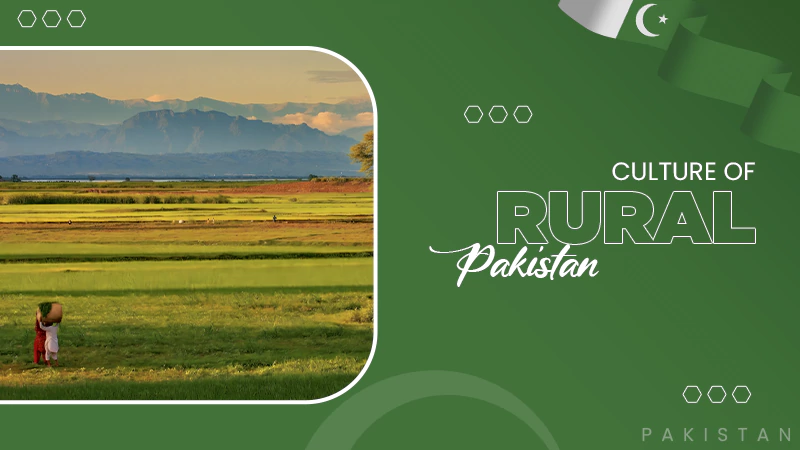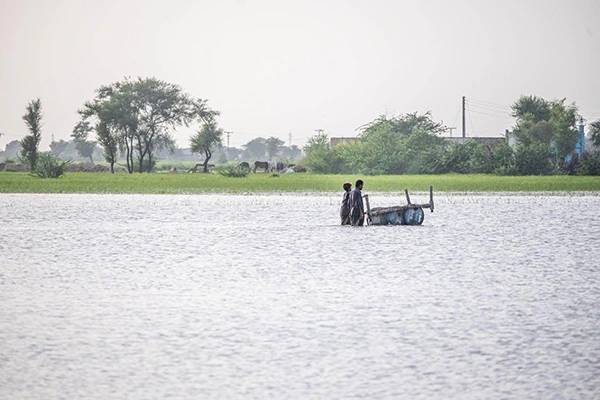

In the vibrant heart of Pakistan’s rural landscape lies a treasure trove of tradition, resilience, and artistic expression that remains largely hidden from the well-trodden tourist paths. This soulful blend of loom and lyric—textile and tune—is not only the beating heart of the countryside but also a living testament to a cultural heritage that stretches back centuries. For travellers who are drawn to authenticity and the unfiltered pulse of a nation, this journey offers more than sights—it offers insight. And with a growing number of affordable flights to Pakistan, it has never been easier to experience this cultural symphony firsthand.
The Weaving Heritage of Pakistan’s Villages
From the sun-baked plains of Punjab to the green terraces of Swat, traditional weaving in Pakistan tells stories of community, identity, and self-reliance. The art of creating fabric on handlooms—locally known as khaddi—has been passed down through generations. Every thread carries a legacy.
In the village of Kanjrur near Narowal, for example, families continue to produce handwoven cotton cloth known as khaddar, a rough but breathable fabric prized during the cooler months. The entire process, from spinning cotton to dyeing and weaving, happens within the community. Each colour choice and pattern is intentional—rich maroons for celebration, deep blues for solemnity.
In Sindh, the tradition takes on a more ornate form. The famous Ajrak fabric, dyed using resist printing and indigo pigments, is worn like a second skin during festivals and ceremonies. The symmetry and symbolism in these fabrics represent nature, spirituality, and protection—a language of geometry spoken through loom and hand.
What makes rural Pakistani weaving so compelling is its grassroots nature. In an age dominated by fast fashion, these artisans remain connected to their tools and the Earth, making each garment an heirloom rather than a commodity.
The Poetry in the Air: Rural Pakistan’s Musical Soul
Just as looms articulate tradition in fabric, music gives voice to emotion. In rural Pakistan, music isn’t a performance—it’s part of life. Whether in the echo of a shepherd’s flute across the Cholistan Desert or the hypnotic beat of a dhol at a village wedding, sound is woven into the very atmosphere.
Punjab, with its lush wheat fields and stoic buffaloes, is the land of sufi kalam and folk geet. Here, poetry by saints like Bulleh Shah or Waris Shah comes alive in soulful renditions sung around crackling fires. Instruments like the ektara (a one-stringed instrument) and chimta (a percussion tool resembling fire tongs) provide a raw musical backdrop that needs no amplification.
Venture into interior Sindh, and you’ll find the mesmerizing strains of shah jo raag—devotional singing performed by faqirs (mystics) at shrines such as those of Shah Abdul Latif Bhittai. The language is Sindhi, the themes are eternal: love, loss, and longing.
In Khyber Pakhtunkhwa and Balochistan, rubab and surnai (local flute) dominate village music, especially during seasonal festivities and tribal gatherings. Here, songs are not only for joy but also for transmitting oral histories and celebrating ancestral bravery.
The Role of Women in Cultural Transmission
In many rural pockets of Pakistan, women are the custodians of both loom and lyric. They gather in courtyards to embroider clothes with intricate mirror work or stitch phulkari, a colorful floral embroidery native to Punjab. These sessions double as impromptu singing circles, where lullabies, wedding songs (sehra), and sorrowful dirges are shared.
These practices are far more than leisurely activities; they are means of emotional resilience, education, and storytelling. Women sing of migration, of sons gone to war, of seasons, and of love lost and found—all while sewing legacy into every inch of fabric.
Cultural Festivals and Folk Fairs
To see the full spectrum of this rich rural culture, time your visit to coincide with one of Pakistan’s many folk festivals. The Lok Mela in Islamabad gathers artisans, musicians, and storytellers from across the provinces to showcase their craft. Similarly, the Urs (death anniversary) festivals of sufi saints are both spiritual pilgrimages and cultural carnivals, complete with song, dance, and food.
In Cholistan, the Desert Jeep Rally has evolved into a hybrid event where camel rides, folk music, and artisan stalls stand side by side with motorsports—giving travellers a multifaceted glimpse of rural identity.
How to Plan Your Journey
With more international flights to Pakistan now connecting Europe, the Middle East, and Asia to major cities like Lahore, Karachi, and Islamabad, accessing these rural gems is more convenient than ever. From there, a few hours by road transport can take you deep into the countryside—into villages where the looms hum and the lyrics echo.
It’s advisable to connect with cultural preservation groups or ethical tour operators who can arrange homestays and workshops with local artisans. This not only enriches your understanding but ensures your presence benefits the communities you visit.
Final Thoughts: The Soul of a Nation in Thread and Tune
Rural Pakistan is not just a destination—it is a living museum of human expression. In its looms and lyrics, you’ll find a rhythm that’s both ancient and alive. The land whispers stories in fibre and melody, inviting you to listen, feel, and perhaps, take a piece of its soul home in your heart.Whether you’re an intrepid traveller, a culture enthusiast, or someone simply seeking depth beyond the usual tourist experiences, a journey into rural Pakistan is a profound reminder: sometimes, the truest luxury is authenticity. And with flights to Pakistan becoming more accessible, the threads of this unforgettable adventure are within reach.











